Building a Botanical Method Paludarium for Emperor Newts (Tylototriton shanjing)
A guest blog post by our #TanninBae Ambassador Hayley Z.
Inspiration Behind the Botanical Paludarium for Emperor Newts
Many aquascapes are conceived from a memory, and this situation is no different. Growing up in Northern New Jersey, it was common practice for my dad and me to go on weekly hikes in the State Forest near our home. Unlike what many perceive, the state is brimming with wildlife. My favorite thing to do was to walk the trails and flip logs and rocks, curious about what might slither or crawl out to say hello. My first encounter with a Spotted Salamander (Ambystoma maculatum) ended in a massive tantrum when I couldn’t take it home with me. When I was first introduced to the Emperor Newt (Tylototriton shanjing) many years later, I felt like I was practically shot back in time to the exact moment I saw that Salamander in the State Forest. As someone who particularly enjoys the design and building aspect of this hobby, I saw an opportunity to create a one-of-a-kind aquascape that was reminiscent of their native environment, touch upon my love for botanicals, and most importantly, create an environment functional for these newts. 
An Emperor Newt (Tilototriton Shanji) and a Ruby Goby (Ruby Spotted Gobies (Rhinogobius rubromaculatus).
As the tank has grown, it has become more and more a labor of love for me. Aquascaping can sometimes leave the animals who reside in them as an afterthought, and my goal was simple: make sure the aquascape was not only aesthetically pleasing for me, but also completely designed with the animals as the priority. Overall, the building process took me about two months to complete.
Recently, the tank placed 3rd in The Aquatic Gardeners Association's International Aquascaping Contest, a huge honor for me! The botanical methods used in this scape are truly what bring it to life, in my opinion, and there is no better place to give a brief walkthrough on how it was created than right here on Ben's Aquarium Blog.
Hayley used Great Stuff Expanding Spray Foam and a power drill to carve her textured background. Do not use the product that deters mold/mildew or bugs. 100% plain spray foam in yellow or black.
Essential Materials for Building the Emperor Newt Paludarium
Traditional aquascaping and paludarium aquascaping each have their own challenges, but one thing that paludariums tend to require is things like power tools and other equipment to really bring your concept to life. I formulated a “blueprint” of sorts, made to mimic the small ponds and streams that run beneath the stone forest. I knew the background was the biggest battle I had to overcome for sure. It is composed of roughly 25 pounds of Seiryu Stone and Malaysian Driftwood that reaches into the water portion, requiring a considerable amount of support to properly fuse them together-especially if you want it to withstand water and time. Products like expanding foam, aquarium-safe silicone, and sponge filters were go-to choices for me, but also some uncommon materials like light diffusing panels and hidden PVC pipes were used as well. Thinking outside the box and adapting to scenarios as they played out was a massive contributor to the success of this tank.

Rock and stone were adhered to the foam and supporting light screen, with bog wood used below to create habitat for the newts and fish. Pieces were chosen that allowed the newts easy access to crawl in and out of the water.
Step-by-Step Guide to Setting Up Your Emperor Newt Habitat
I started by placing a piece of 1” PVC in the corner, which is where my airline tubing runs into the water portion for filtration purposes. I flipped the tank onto its back, adhered pieces of the light diffusing panels I mentioned earlier to the back panel with silicone, applied a thin layer of expanding foam for the wood and rocks to hold onto, and allowed it time to set. I used aquarium-safe silicone to secure the rocks and wood in place, allowed it time for the sealant to cure, and filled in the gaps with more expanding foam. The foam expands right into the small squares of the paneling, adding even more security for the rocks and wood to stay in place long term. Once this step is complete, the foam needs to be shaved down to create a grip-like texture, allowing your substrate of choice to adhere smoothly and evenly. I used a power drill along with a sanding bezel to shave out large pockets that are stuffed with sphagnum moss to increase humidity for plants, as well as constructing the “moss cave” that the Newts seem to enjoy quite a bit.

Moss was pulled apart and sprinkled across the wood to help establish its spread. The water feature helps keep the wood hydrated and the soil moist to promote moss growth.
Creating a Natural Background for Emperor Newt Enclosures
Using silicone, I secured a traditional aquarium sponge to the bottom as the base of the land portion. This not only creates a layer separating the soil from direct contact with water but also adds height to create a sloping hill effect in the right corner of the tank. I attached some more wood to the bottom glass and sponge and did my best to make sure there were no gaps that planted substrate could creep out of. Any scraps of sponge were used to fill in any tiny areas the Newts could dig into and have issues getting out of as well. At this point, I was about two weeks into building and still wasn’t completely sure everything was secure. I finally flipped it to its correct position and was relieved to see how secure everything was. It was also exciting to see it from the correct perspective!

A mix of materials was glued to the exposed foam using aquarium-safe silicone, making the background look more natural and promoting stable humidity levels as the materials absorb water from the misting system.
Best Botanicals and Substrates for Emperor Newt Paludariums
Things were really heating up in the building process, and it is probably the part I enjoy the most of all. As I previously mentioned, this Biotope is an ode to The Stone Forest in Yunnan, China, home to this special species of Newt. I chose a mix of Thai Cutch Bark and Cinnamon Bark to provide areas for trailing plants to grip as they filled in over time. Once the background was complete, I filled in all the pockets and caves with moss. In the land portion, I added a layer of Fluval Stratum, capped it with Sphagnum moss, and added clean soil. Once the sponge filter was secured, I filled it with water and let the tank run for a few days to rule out anything that could cause an issue down the line. Botanicals are a huge component of the water portion, and I use several different types at all times! My favorites to add are Bamboo Leaves, Persian Walnut Leaves, Cacao Pods, Sappanwood Pods, and Acorn Tops. I top off the tank bi-weekly with RO water infused with Betta Botanicals Betta Tea in the Red color.

The Emperor Newts love using Cacao pods as refuge, and as elevated areas for body temperature regulating.
Ideal Plant Choices for Your Emperor Newt Habitat
It was finally time for some plants! I wanted to choose region-specific plants like Mosses, Ferns, and Ficus. The use of aquatic Weeping Moss on the wetter surfaces has grown beautifully, and trails perfectly into the water. Further back in the scape, I used terrestrial Mood Moss to give the perspective of a larger surface overall. Plants like Selaginella kraussiana and Nephrolepis cordifolia do well in this setting and can handle a beating from animals crawling on them. Ficus pumila and Ficus radicans are the primary plants used to blanket the rocks and wood, as they are commonly found in situ. I planted them in the Sphagnum Moss at the top portion of the tank to make sure the roots have adequate humidity. The finishing touch for me was to age the rocks a bit. I used the dust from the bottoms of the bags of Bark, mixed it with some concentrated Betta Tea, and applied it to the rocks with a toothbrush. It gives a wonderful moodiness to the look of the enclosure and might be my favorite thing about the entire scape.

The Emperor Newts love to climb over the moss and wood when hunting for worms.
Equipment Setup Tips for Emperor Newt Paludariums
I knew I wanted to have a misting system hooked up in the tank to keep the plants as happy as possible. The paludarium is set up at my office, so I wanted to ensure the plants didn’t suffer during my absence! My usual go-to is the Fluval 3.0 Fresh and Plant, which grows terrestrial plants incredibly well. Between these two items, the tank is practically on autopilot with the exception of a couple of trimmings here and there, and of course, caring for my animals. For aesthetic purposes, I also decided to add a Fogger to give a spooky feel every once and a while. It wasn’t a necessary addition, but seeing it come to life is super neat!

The water feature in their enclosure is only a few inches deep, with many botanicals and pieces of wood provided for emerging out of the water.
How to Care for Emperor Newts (Tylototriton shanjing)
Emperor newts are semi-aquatic but seem to prefer spending much of their time on land. Ambient temperatures land around 68-70 degrees in the room, making it a very comfortable setting for all inhabitants. I forgot to mention...they’re also poisonous…but not so much to humans! In the wild, their largest predator by far is rodents like rats and mice. The Newt will excrete their poison from the round glands on its back if they feel threatened, and one Newt can kill well over 1,000 Rats! I handle mine as needed, but have never had any reason to believe humans are affected by this special ability. As far as diet is concerned, the six Newts have been accustomed to having small Red Earthworms about 4 times a week. I have also seen them munch on ants that have hitchhiked their way into the tank as well!
I wanted to add some fish to the water portion, so I chose two Ruby Spotted Gobies (Rhinogobius rubromaculatus), which are also native to the Yunnan Province. They do well in colder temperatures and eat any scraps left behind by the Newts, as well as the occasional offering of flakes. The tank has been seeded with springtails and isopods to keep up with waste production, creating a great ecosystem. With the exception of feeding, I try my best to disturb them as little as possible...but if you have seen any of my content regarding these little guys, you know they are quite thirsty for attention.

This is the final photo submitted to the AGA for their competition, which won me 3rd place in 2025!
Final Thoughts: Designing the Perfect Ecosystem for Emperor Newts
It has been nearly two years since I started dreaming up this enclosure. It’s the first thing I see when I walk into my office in the morning, and it brings me so much happiness. It was the hardest I’ve ever worked on something, ever. I had many moments where I felt a sense of defeat and fear throughout the process, but I kept on persisting and not deviating from the ideas that I originally came up with. My office has taken many forms throughout my ten years in it, but it has always had fish tanks or tropical plants. Newts were my step outside the box from start to finish. What came from it was a boost of confidence not only from a design aspect but, more importantly, as an animal keeper. I believe everyone has a different definition of aquascaping as it pertains to them; for me, it was to provide a space that is aesthetically beautiful and functional for the animals and myself. I must admit that it is quite the distraction at times, but never one that I could ever complain about.
About the Author:
Hayley Z. is a passionate aquascaper and dedicated animal keeper whose love for nature began during childhood explorations in New Jersey’s forests. With a thoughtful approach that blends aesthetic design and functional habitats, she specializes in creating botanical-driven paludariums and aquariums. Her award-winning setups emphasize the well-being of their inhabitants, combining meticulous craftsmanship with a deep appreciation for biodiversity.


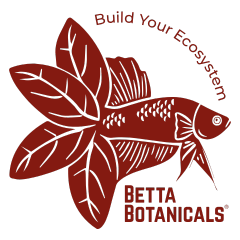


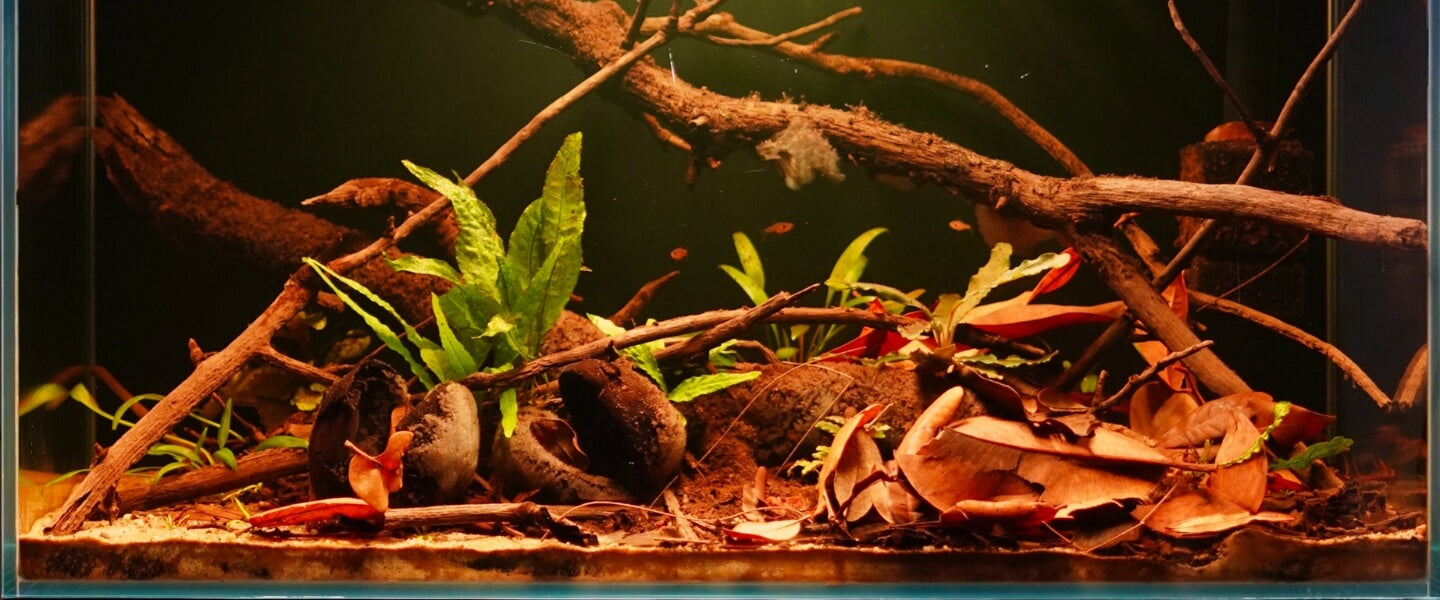

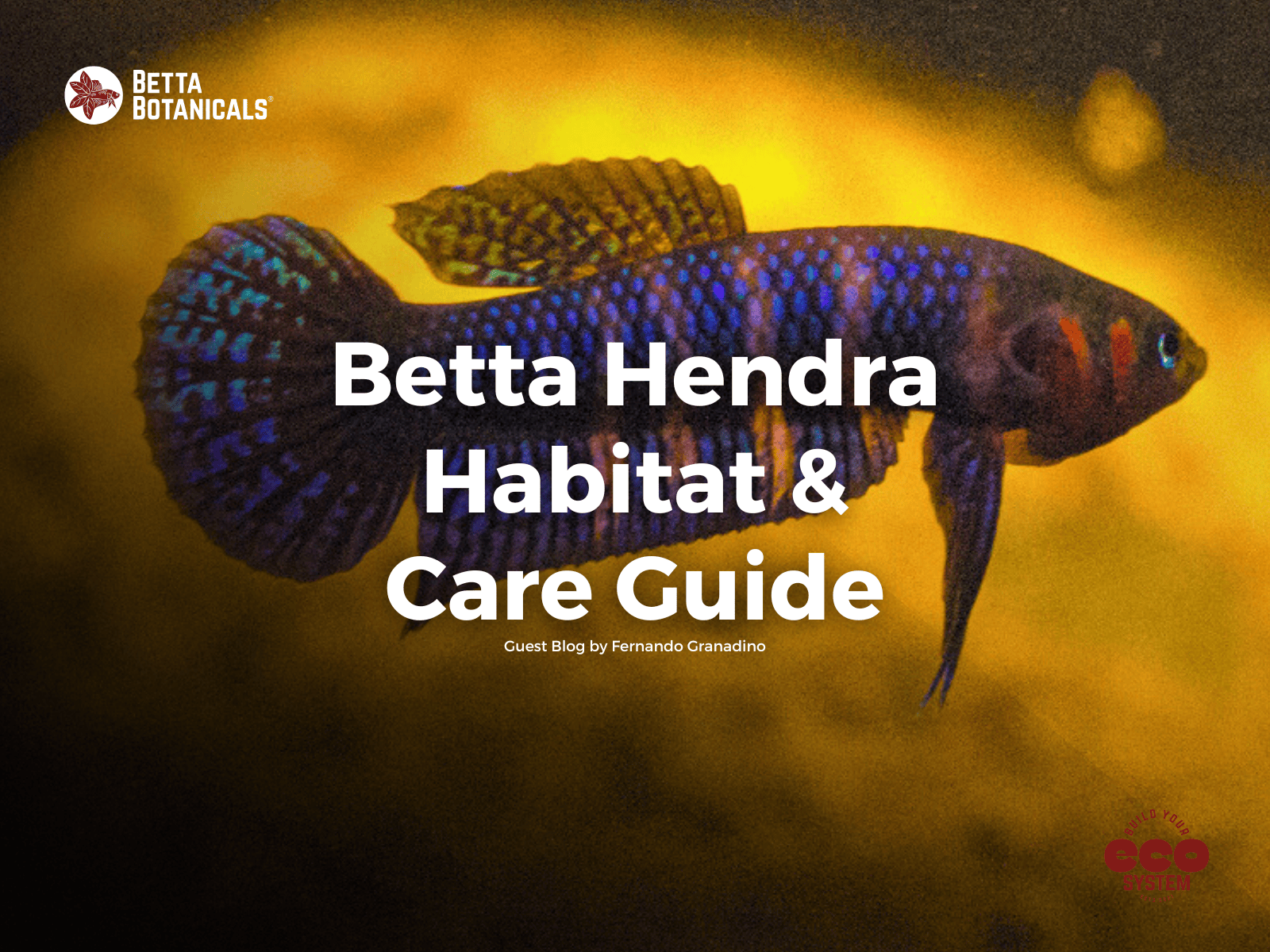
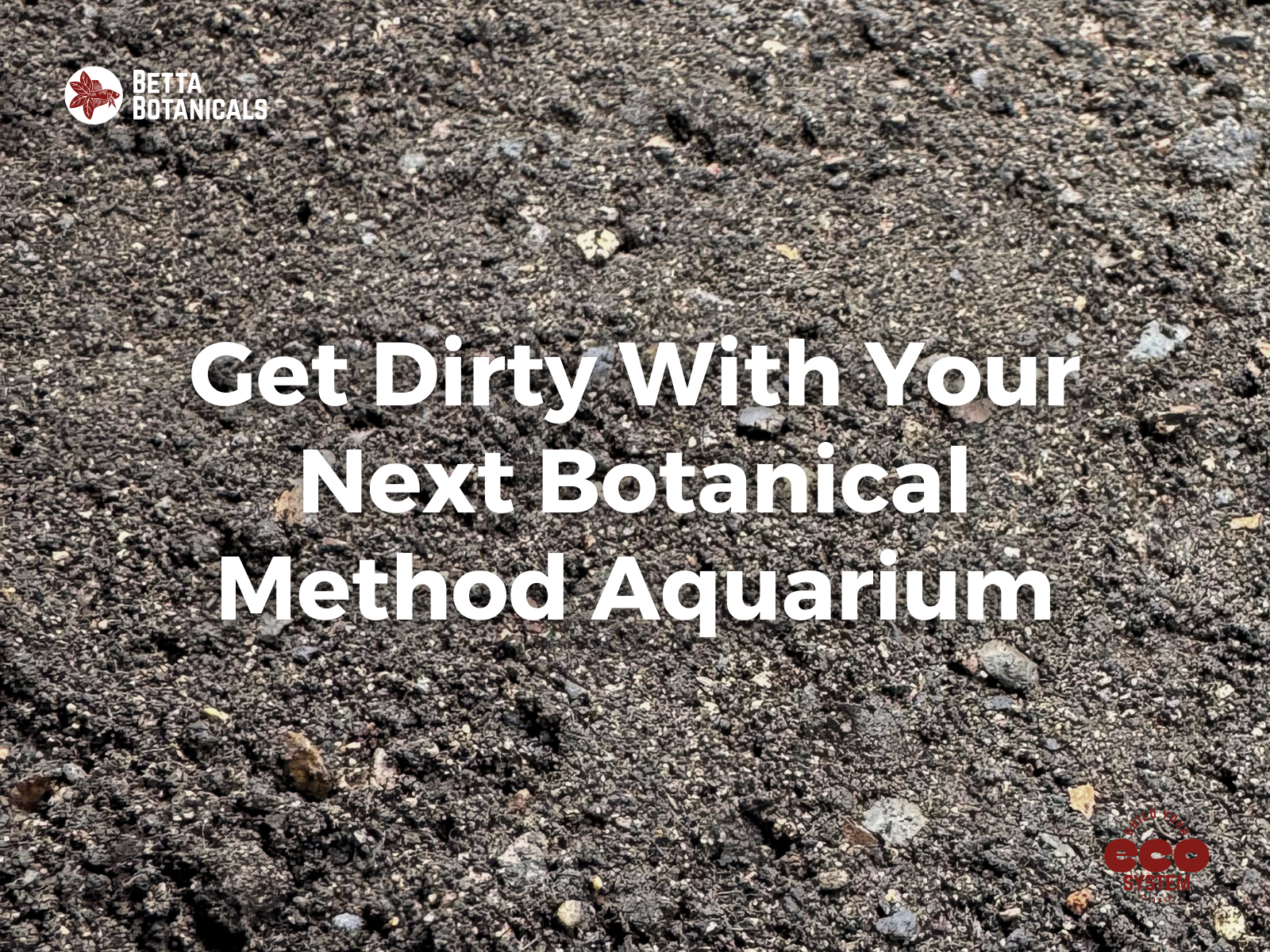
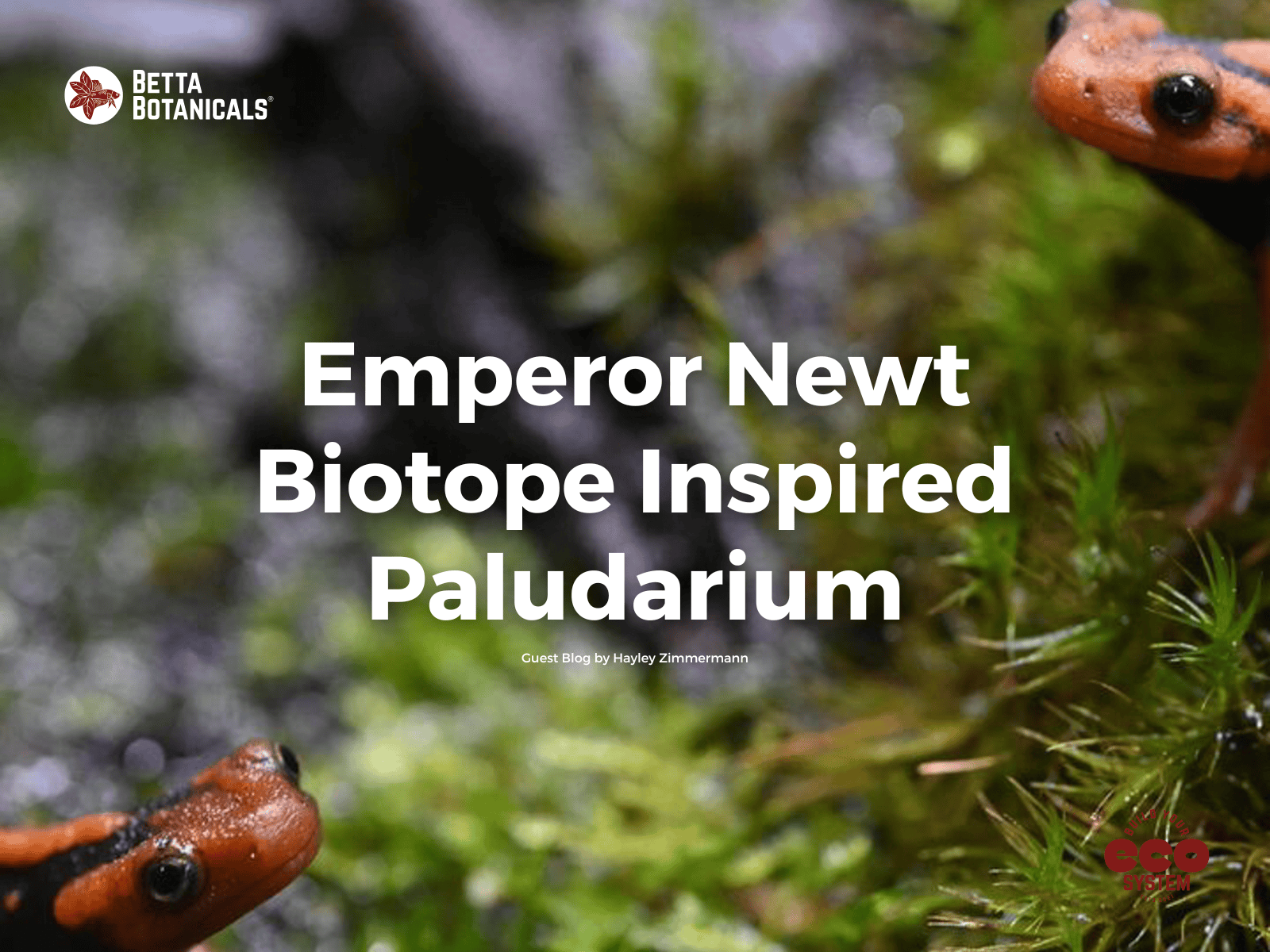
Inspire your friends:
How Methods Defined The 'Botanical Blackwater Tinted Ecosystem Aquarium Style'
Getting Dirty, A Guide to Creating a Dirted Botanical Method Aquarium